Schiphol Media: Connecting the physical and digital world
The future of airport advertising looks bright. And not just because passenger numbers are expected to grow exponentially across the world. Technological advancements continue to offer new opportunities for personalisation. Those include advancements in the use of big data, rich content, links with mobile, and more and better digital screens. The physical integration of brands at airports is also expected to continue. Through temporary pop-up stores and activations, for example. And also through branded seats, lounges and services.
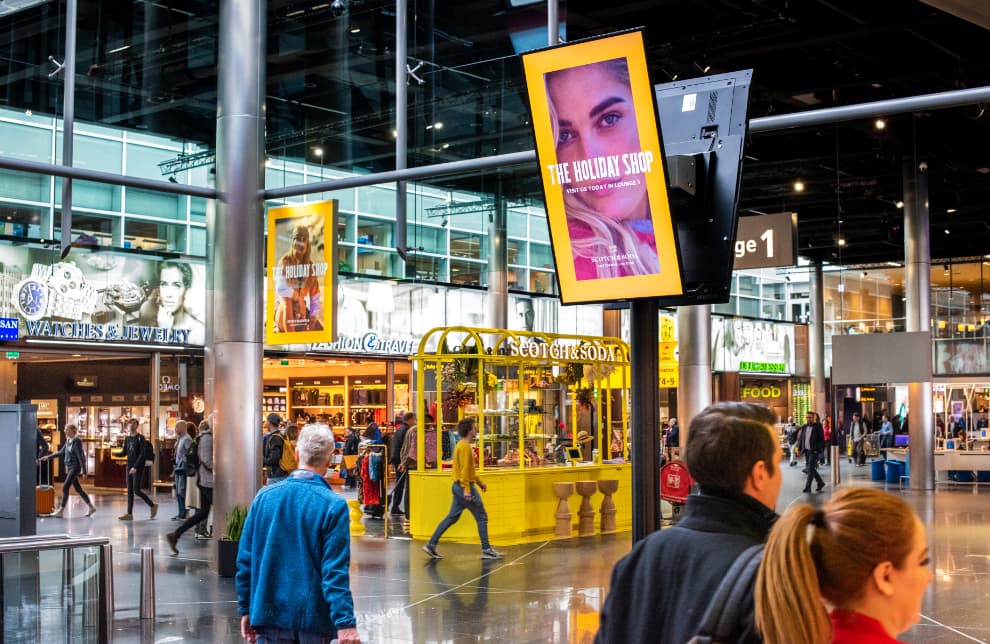
Arthur de Groot – Schiphol Media sales director – is seeing the physical and digital advertising landscapes at the airport increasingly merge. Here, he discusses the ways in which he and his media team are continuously learning to combine and utilise these two worlds.
Leading the way in a changing retail landscape
‘We’ve been seeing an increasing demand for relevant brand expressions that add value in the form of entertainment, information, advice, inspiration or extra comfort. These developments fit within the changing retail landscape, in which consumers are online much more frequently, and yet it is still very important for brands to reach (potential) customers in the real world in an effective way.
‘Airports offer an ideal environment for this. Visitors arrive there every year in huge numbers, they stay for a relatively long time, and they are open to (relevant) branding. Since there are direct sales channels within walking distance for many of the advertised products, travellers’ interests can easily be converted into sales.’
Capturing attention with digital screens
‘We have an enormous range of screens that we constantly renew and expand. For example, the iconic Astrovision screen in the square outside the airport will soon be replaced by a state-of-the-art version. We’re also installing new screens in the seating areas of all non-Schengen gates.
‘We combine different types of content to capture travellers’ attention for longer periods of time. We alternate flight and boarding information with news, sports, entertainment and customised brand content. When travellers sit at the gate waiting for their flight to New York, for example, they see destination information and travel inspiration offered by brand X. Is the weather nice? Then we may show advertisements for sunglasses available in shops at Schiphol, or offers from car rental companies at JFK International Airport for rental of their convertibles.’
+1,600 digital screens, 107 lightboxes, 8 outdoor masts, 15 giant banners, 10 promotion spots.
Focusing adverts through hyper-targeting
‘In addition to the new screens, we offer a number of options for hyper-targeting, in which we zoom in on specific target groups. Chinese travellers are a good example. Our China package allows advertisers to choose to display adverts (in Chinese) on selected screens when there are many travellers from the country in the shopping areas.
‘We are also constantly looking for ways to reach travellers at the right times through mobile channels. For example, when Chinese travellers log in to our WiFi network, they arrive at a special landing page with useful information and special offers. We also communicate with them via our own WeChat channel, and we are the first WeChat Pay Flagship Smart Airport in Europe. As a result, we can offer seamless travel services and a recognisable, user-friendly shopping experience to many Chinese travellers.’
71 million passengers in 2018, 327 destinations, 500,000 flight movements annually, one of the most well connected hubs in the world.
Using smartphones wisely
‘Of course, smartphones have long been an essential part of the airport experience. On the one hand, we try to tempt travellers with a wide range of shopping, entertainment and hospitality so that they keep their smartphones in their pockets for a little while longer. On the other hand, we’re finding more and more ways to offer online services at the airport, and share content though those pocket-sized screens. In the future, we’ll also use our website and app to promote our partners and their products, so that brands can reach 2.5 million people every month.
‘We are also experimenting with the extensive beacon network at the airport. For example, we conducted an interesting pilot together with a large travel operator. Its app was connected to our beacon network at Schiphol, through the beacon API. This allowed it to send push notifications to its customers at a number of important moments in the travel process: at the check-in counters, passengers were notified of the current waiting time at security. At the gates, they got information about their destinations. And on their return to Schiphol after their journey, they got a welcome home message that also told them which luggage belt would have their baggage. This is a great example of how a campaign can add value for both the traveller and the brand partner.’
Measuring better all the time
‘Monitoring and reporting on campaigns is a clear point of attention for us. As an in-house media department, we have above-average information about the impact of campaigns on sales. We share this data with advertisers, within the scope of our agreements with retail partners. And we use the data to optimise campaigns. Over the past two years, we have done extensive research in order to create an almost 100% accurate picture of the number of passengers that pass by a certain object, how many of them saw the advert, and how often the advert was viewed in total. Hundreds of sensors have been installed at the airport to monitor all of this. We are currently finalising the interface between this data and our campaign reporting system.
‘In June, we conducted an eye-tracking experiment to measure the effective reach of our advertising objects. We found 74 passengers who were willing to walk through our terminal with special eye-tracking glasses for this. We didn’t tell them the purpose of the glasses beforehand. In this way, we could measure exactly how long they looked at which media objects. When they arrived at the gate, we asked them a few questions to discover what they knew about all of the adverts they had seen. The results were very positive. Some important takeaways were:
- Branding campaigns work incredibly well around our gates. The percentage of travellers that looked at an object for a long time and remembered the brand afterwards was higher there than in other areas.
- When an advert is relevant – like artwork of electronics next to an electronics store – the percentage of people who look at the object is higher.
- A full 98% of passengers see our digital pier network as they pass by.
- The contrast and overall image of an advert have a significant impact on the percentage of passengers who make eye contact with the object. A “good” placement can therefore still be rendered useless if the advert isn’t optimised for the location.’
That’s why creative brands choose Schiphol
‘We are not part of a large group that exploits media at multiple airports and can therefore offer a “one-stop shop” for international campaigns. Even still, we make a difference in other ways. First, advertisers get more for their money, because we don’t have to share the revenue. Also, we know our visitors and the power of our media objects like no other. We have above-average data and we use our creative and operational freedom to perfectly integrate brands into the terminal.
‘We are better able to do this because we are part of the airport and work closely with our colleagues from other departments. Think here of Operations, Retail, and Consumer Marketing. Together with them, we ensure that the brands with which we work add maximum value to our passengers’ journeys.’
Read more
-
Account Manager Nicolette's passenger journey
Attract passengers' attention
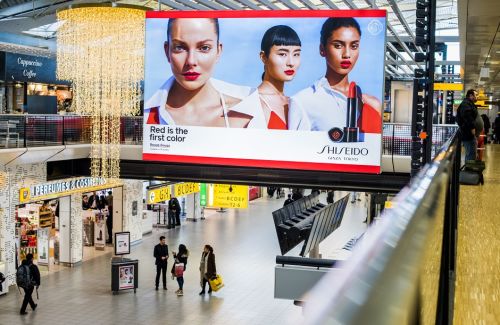
-
Your brand comes alive at Schiphol
When your ad at Schiphol really hits the spot, your brand comes alive
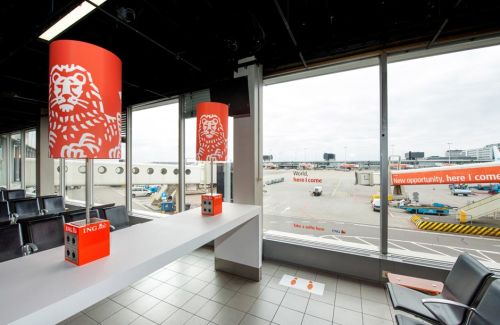
-
More demand for luxury at Schiphol
The trends for luxury brands in airport retail
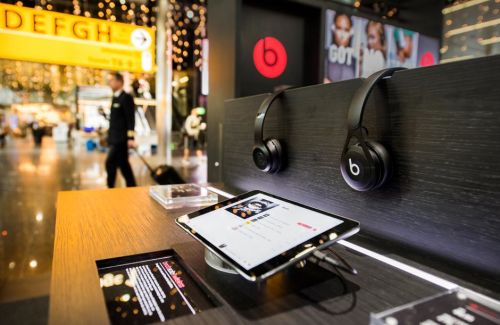
-
Advertising expert Merijn Schildkamp
Merijn Schildkamp knows everything about airport advertising and passenger behavior
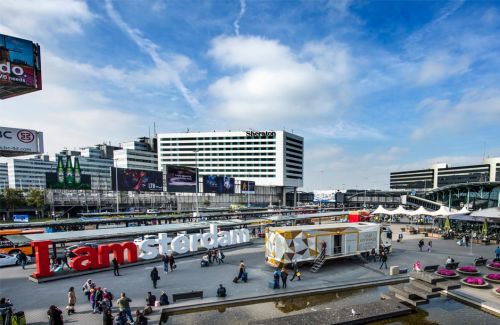
-
64 million people under one roof
Targeting your campaign towards the 64 million people who use the airport
